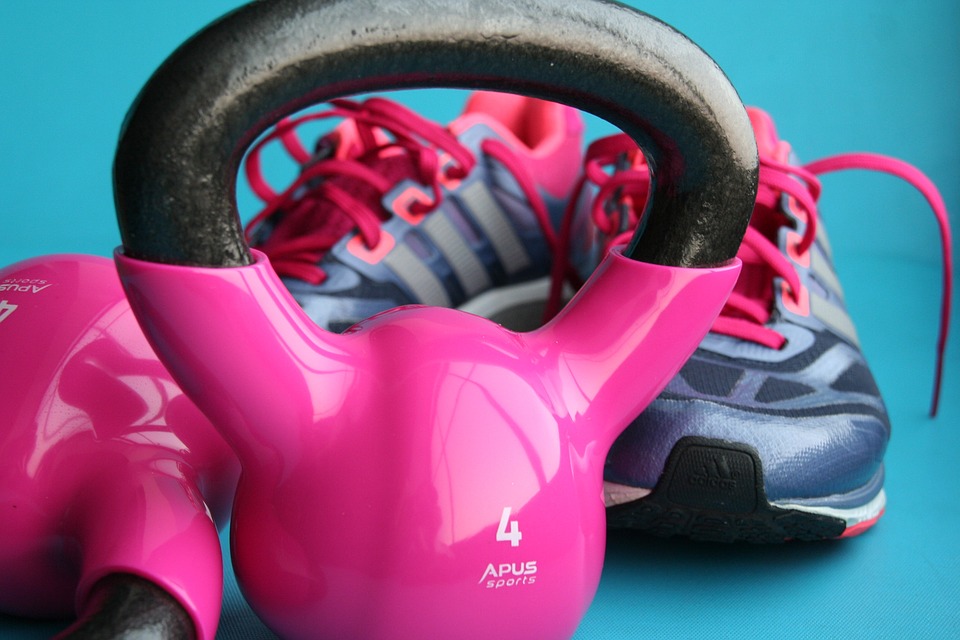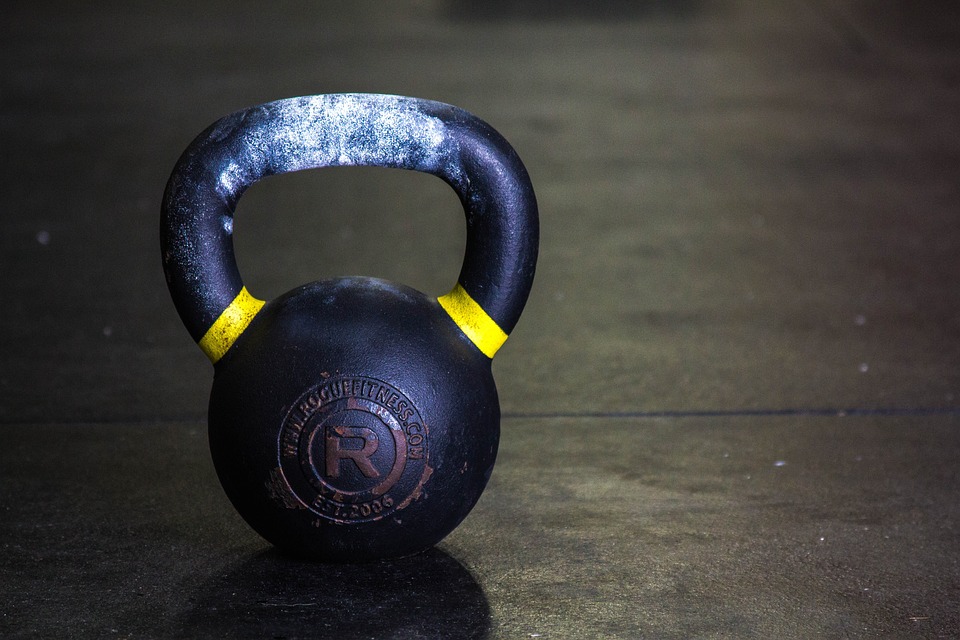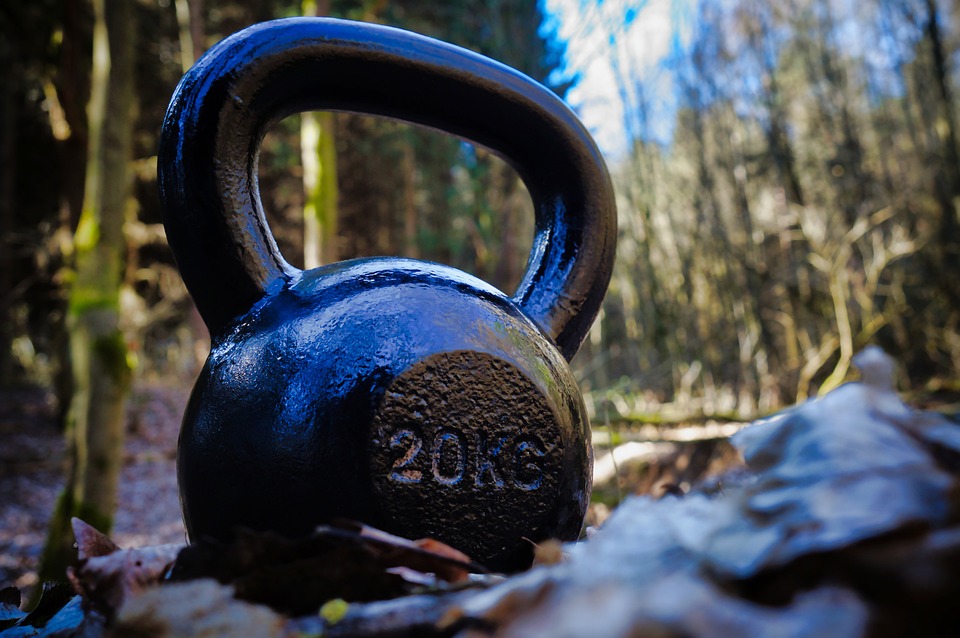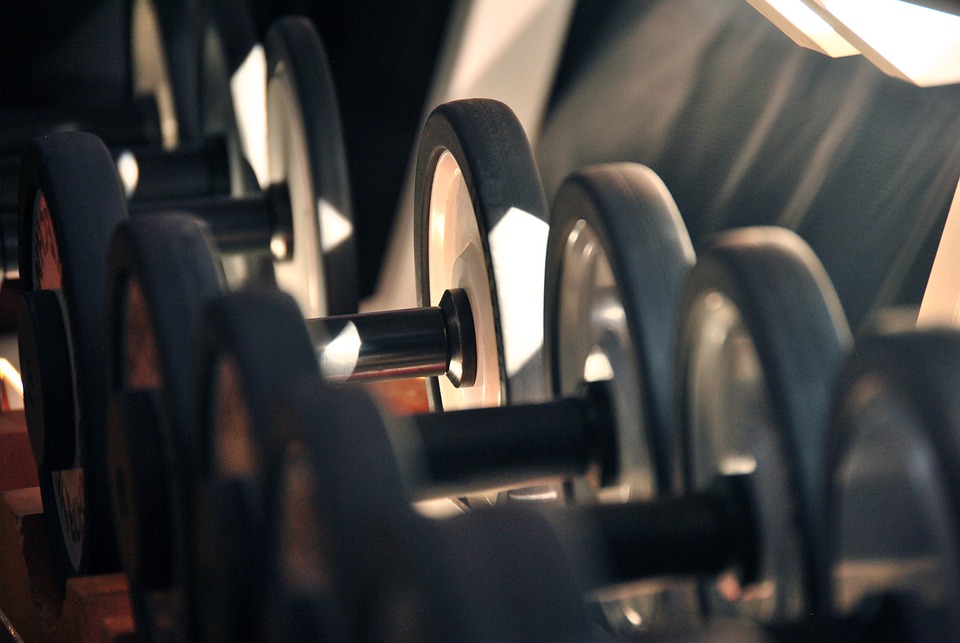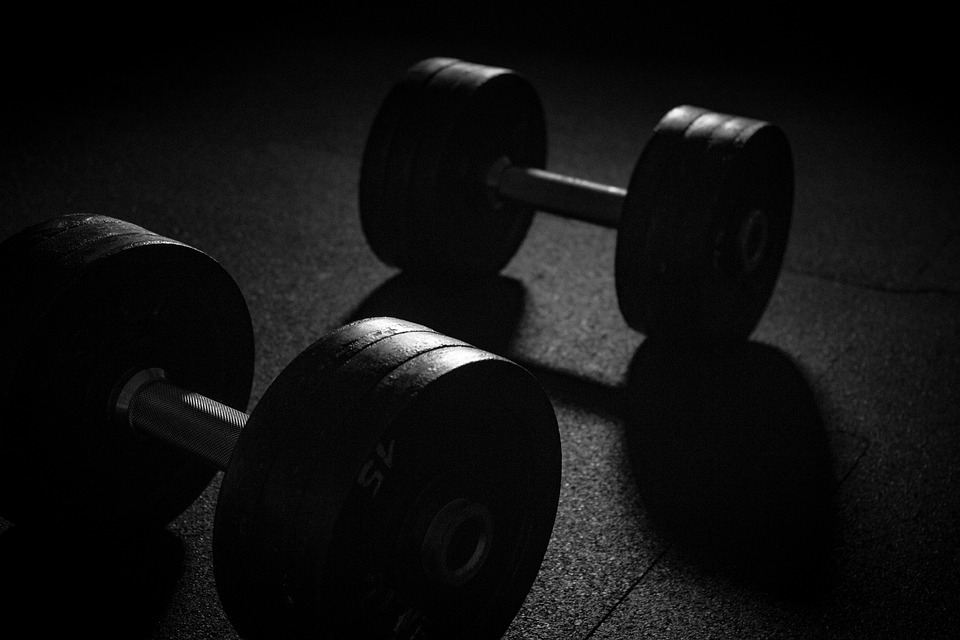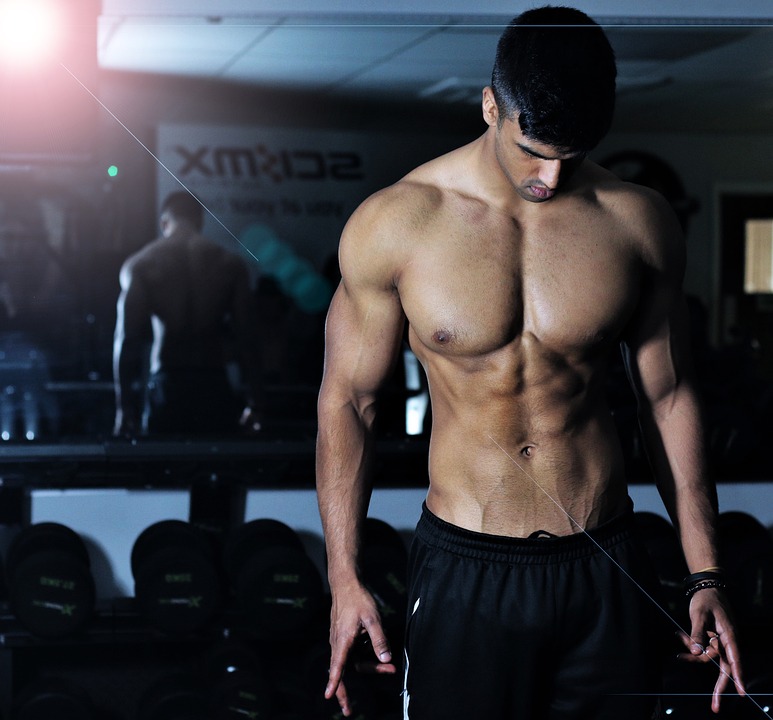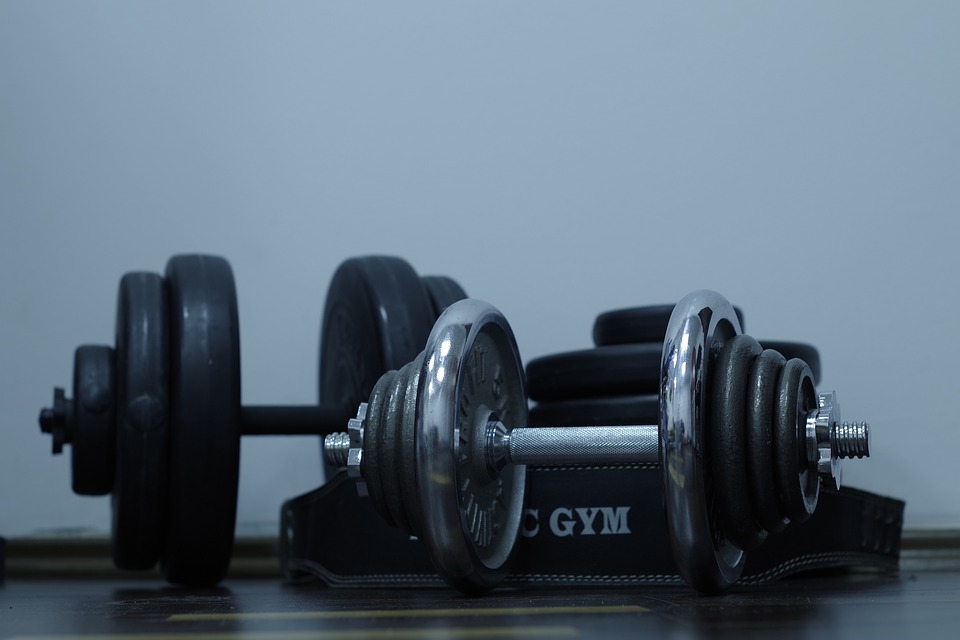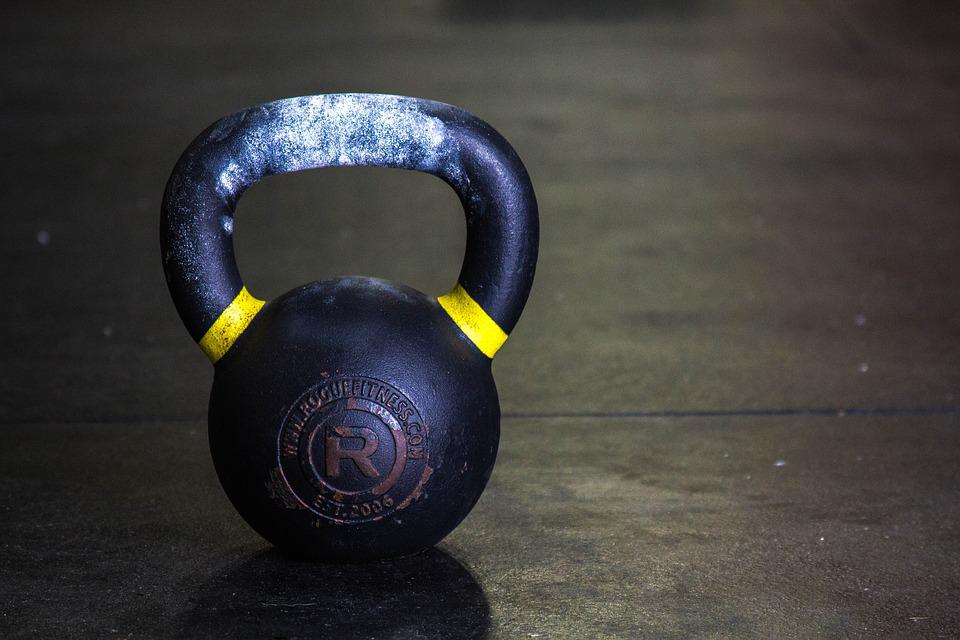
New exercise equipment can help you break out of your normal routine and get excited about working out, or even help you get started on your fitness journey.
Kettlebells, which people often compare to cannonballs with handles, have become a popular strength-training option in recent years. Kettlebells offer a unique way of training that many people find to be more effective than traditional methods such as using barbells, dumbbells, and resistance machines.
Kettlebell exercises are effective in working multiple muscle groups simultaneously, thus being a great way to give your arms, legs, and abs a concise workout. Not only does this improve your strength, but your cardiovascular fitness as well.
Kettlebells were originally used as tools on farms in Russia, but they were reinvented as exercise weights after strongmen started using them to perform impressive feats of strength.
Kettlebells can be used to create an full-body workout, or you can pick and choose specific kettlebell exercises to add to your strength-training regimen.
Getting started with kettlebell exercises
The weight you select will depend on your fitness goals, as well as your level of experience. Kettlebells come in different weights, from 8 pounds to 80 pounds or more. The weight you pick will depend on your fitness goals and how experienced you are.
Kettlebell weight for beginners
If you’re just getting started with strength training, or if you haven’t used kettlebells before, fitness experts suggest:
For women: 8- to 15-pound kettlebells
For men: 15- to 25-pound kettlebells
You should use lighter kettlebells when you are first starting out. This will allow you to focus on learning the proper form and technique for the different exercises. You can always increase the weight once you’re comfortable with the correct form for each exercise.
Kettlebell weight for intermediate to advanced training
If you’re at an intermediate to advanced level in your strength training, fitness experts recommend:
For women: 18-pound kettlebells
For men: 35-pound kettlebells
Pacing your kettlebell workouts
You should try to work on your kettlebell exercises 2 or 3 times each week.
Begin with 6-8 repetitions of each exercise and then increase the number of sets as you gain strength.
Make sure to do some warmup exercises for 5-10 minutes before beginning your kettlebell routine.
46 Kettlebell Exercises
- Kettlebell Slingshot (Kettlebell Around the World)
The muscles used in this workout are the upper trapezius, deltoids, subscapularis, infraspinatus, obliques, abdominals, biceps, triceps, and forearms.
- Kettlebell Halo
The muscles used in this routine are the upper trapezius, deltoids, subscapularis, infraspinatus, obliques, abs, biceps, and triceps.
- Kettlebell Good Morning
The muscles used in this activity are the hamstrings, gluteus maximus, adductor magnus, abdominals, gastrocnemius, and erector spinae.
- Kettlebell Single Arm Deadlift
The muscles used in this exercise are the gluteus maximus (medius and minimus), hamstrings, adductor magnus, quadriceps femoris, gastrocnemius, hip adductors, upper trapezius, abdominals, quadratus lumborum, erector spinae, and spinal erectors.
- Kettlebell Single Leg Deadlift
The following muscles are used: gluteus maximus (medius and minimus), hamstrings, adductor magnus, quadriceps femoris, gastrocnemius, hip adductors, trapezius, latissimus dorsi, rhomboids, abdominals, obliques, quadratus lumborum, erector spinae.
- Kettlebell Swing Two Hands
The hamstrings, gluteus maximus, erector spinae, quadriceps femoris, rhomboids, trapezius, deltoids, latissimus dorsi, abdominals, and forearms are all used in this exercise.
- Kettlebell Single-Handed Swing
The muscles used in this exercise are the hamstrings, gluteus maximus, erector spinae, quadriceps femoris, rhomboids, trapezius, deltoid, latissimus dorsi, obliques, abdominals, and forearms.
- Kettlebell Swing Changing Hands
The muscles used in this exercise are the hamstrings, gluteus maximus, erector spinae, quadriceps femoris, rhomboids, trapezius, deltoid, latissimus dorsi, obliques, abdominals, and forearms.
- Kettlebell Turkish Get Up
The muscles used in this exercise are the gluteus maximus, hamstrings, adductor magnus, quadriceps femoris, trapezius, rhomboids, latissimus dorsi, deltoid, supraspinatus, subscapularis, infraspinatus, triceps, erector spinae, abdominals, quadratus lumborum, obliques (internal and external), and serratus anterior.
- Kettlebell Reverse Turkish Get Up
The text lists the muscles used in a given action or exercise. The muscles listed are the Gluteus Maximus, Hamstrings, Adductor Magnus, Quadriceps Femoris, Trapezius, Rhomboids, Latissimus Dorsi, Deltoid, Supraspinatus, Subscapularis, Infraspinatus, Triceps, Erector Spinae, Abdominals, Quadratus Lumborum, Obliques (Internal & External), and Serratus Anterior.
- Kettlebell Goblet Squat
The Gluteus Maximus (Medius & Minimus), Hamstrings, Adductor Magnus, Quadriceps Femoris, Gastrocnemius, Hip adductors, Upper Trapezius, Abdominals, Quadratus Lumborum, and Erector Spinae muscles are all used in this activity.
- Kettlebell Racked Squat
The gluteus maximus, medius, and minimus, the hamstrings, the adductor magnus, the quadriceps femoris, the gastrocnemius, the hip adductors, the upper trapezius, the abdominals, the quadratus lumborum, and the erector spinae are used in this exercise.
- Kettlebell Racked Reverse Lunge
This exercise works the following muscles: hamstrings, gluteus maximus (medius and minimus), erector spinae, quadriceps femoris, adductor magnus, gastrocnemius, quadratus lumborum, abdominals, and upper trapezius.
- Kettlebell Regular Row
The muscles used in this workout are the Latissimus Dorsi, Trapezius, Teres Major, Rhomboids, Posterior Deltoids, Erector Spinae, Gluteus Maximus, Hamstrings, Gastrocnemius, Biceps, Obliques (Internal & External), and the Transverse Abdominis.
- Kettlebell Suitcase Row Exercise
The latissimus dorsi, trapezius, teres major, rhomboids, posterior deltoids, erector spinae, gluteus maximus, hamstrings, gastrocnemius, biceps, obliques (internal and external), and transverse abdominis are all muscles used in this exercise.
- Kettlebell Windmill
The muscles used in this exercise are the Gluteus Maximus, Hip Rotators, Hamstrings, Deltoid, Supraspinatus, Subscapularis, Infraspinatus, Erector Spinae, Trapezius, Serratus Anterior, External Oblique, Quadratus Lumborum.
- Kettlebell Overhead Warm Up
The muscles used in this workout are the hamstrings, gluteus maximus (medius and minimus), erector spinae, quadriceps femoris, adductor magnus, gastrocnemius, quadratus lumborum, upper trapezius, deltoid, and transverse abdominis.
- Kettlebell Clean
The gluteus maximus, hamstrings, adductor magnus, quadriceps femoris, upper trapezius, biceps, abdominals, erector spinae, and forearms are all used in this exercise.
- Kettlebell Bottoms Up Clean
The following muscles are used: gluteus maximus, hamstrings, adductor magnus, quadriceps femoris, upper trapezius, biceps, abdominals, erector spinae, and forearms.
- Kettlebell High Pulls
The muscles used in powerlifting are the hamstrings, gluteus maximus, erector spinae, quadriceps femoris, rhomboids, trapezius, deltoid, latissimus dorsi, abdominals, and forearms.
- Kettlebell Bob and Weave
The text lists the muscles used in a particular activity. The muscles mentioned are the hamstrings, gluteus maximus (medius and minimus), rectus femoris, vastus medialis, vastus lateralis, erector spinae, abdominals, gastrocnemius, trapezius, and biceps.
- Kettlebell Side Lunge
The hamstrings, gluteus maximus, rectus femoris, vastus medialis, vastus lateralis, erector spinae, abdominals, gastrocnemius, trapezius, and biceps are all used in this exercise.
- Kettlebell Lunge with Rotation
The following muscles are used: hamstrings, gluteus maximus (medius and minimus), erector spinae, quadriceps femoris, adductor magnus, hip rotators, gastrocnemius, quadratus lumborum, upper trapezius, abdominals, external obliques.
- Kettlebell Double Lunge
The hamstrings, gluteus maximus (medius and minimus), erector spinae, quadriceps femoris, adductor magnus, gastrocnemius, quadratus lumborum, and upper trapezius muscles are all used in this exercise.
- Kettlebell Tall Kneeling Press
The above muscles are used in this exercise.
- Kettlebell Half Kneeling Press
The deltoid, supraspinatus, subscapularis, infraspinatus, triceps, erector spinae, trapezius, abdominals, serratus anterior, and gluteus maximus muscles are all used in this exercise.
- Kettlebell Overhead Press
The text lists the muscles used in the movement. These muscles are the deltoid, supraspinatus, subscapularis, infraspinatus, triceps, erector spinae, trapezius, abdominals, and serratus anterior.
- Kettlebell Push Press
The muscles used in this exercise are the hamstrings, gluteus maximus, erector spinae, quadriceps femoris, gastrocnemius, trapezius, abdominals, serratus anterior, deltoid, triceps, supraspinatus, subscapularis, infraspinatus.
- Kettlebell Clean and Press
The muscles used in this workout are the gluteus maximus, hamstrings, adductor magnus, quadriceps femoris, trapezius, biceps, deltoid, supraspinatus, subscapularis, infraspinatus, triceps, erector spinae, abdominals, serratus anterior.
- Kettlebell Clean and Push Press
The muscles used in this workout are the Gluteus Maximus, Hamstrings, Adductor Magnus, Quadriceps Femoris, Gastrocnemius, Trapezius, Biceps, Deltoid, Supraspinatus, Subscapularis, Infraspinatus, Triceps, Erector Spinae, Abdominals, and Serratus Anterior.
- Kettlebell Two-Handed Squat and Press
The muscles used in this exercise are the gluteus maximus (medius and minimus), hamstrings, adductor magnus, quadriceps femoris, gastrocnemius, hip adductors, abdominals, quadratus lumborum, deltoid, supraspinatus, subscapularis, infraspinatus, triceps, erector spinae, trapezius, and serratus anterior.
- Kettlebell Thruster (Squat and Press)
The gluteus maximus, medius, and minimus, hamstrings, adductor magnus, quadriceps femoris, gastrocnemius, hip adductors, trapezius, abdominals, quadratus lumborum, erector spinae, deltoid, supraspinatus, subcapularis, infraspinatus, triceps, and serratus anterior muscles are used in this exercise.
- Kettlebell Static Lunge and Press
The following muscles are used in this exercise: Hamstrings, Gluteus Maximus (Medius & Minimus), Erector Spinae, Quadriceps Femoris, Adductor Magnus, Gastrocnemius, Quadratus Lumborum, Trapezius, Transverse Abdominis, Deltoid, Supraspinatus, Subscapularis, Infraspinatus, Triceps, Abdominals, Serratus Anterior.
- Kettlebell Lunge and Press
This exercise works the following muscles: hamstrings, gluteus maximus (medius and minimus), erector spinae, quadriceps femoris, adductor magnus, gastrocnemius, quadratus lumborum, trapezius, deltoid, transverse abdominis, supraspinatus, subcapularis, infraspinatus, triceps, abdominals, and serratus anterior.
- Kettlebell Clean, Squat, and Press
The gluteus maximus, medius, and minimus, the hamstrings, the adductor magnus, the quadriceps femoris, the gastrocnemius, the hip adductors, the trapezius, the abdominals, the quadratus lumborum, the erector spinae, the deltoid, the supraspinatus, the subscapularis, the infraspinatus, the triceps, and the serratus anterior are the muscles used in this exercise.
- Kettlebell Overhead Reverse Lunge
The following muscles are used in this exercise: Hamstrings, Gluteus Maximus (Medius & Minimus), Erector Spinae, Quadriceps Femoris, Adductor Magnus, Gastrocnemius, Quadratus Lumborum, Upper Trapezius, Deltoid, Transverse Abdominis.
- Kettlebell Overhead Walking Lunge
The muscles used in this exercise are the hamstrings, gluteus maximus (medius and minimus), erector spinae, quadriceps femoris, adductor magnus, gastrocnemius, quadratus lumborum, upper trapezius, deltoid, abdominals, and transverse abdominis.
- Kettlebell Sit and Press
The text lists the muscles used in the following order: deltoid, supraspinatus, subscapularis, infraspinatus, triceps, erector spinae, trapezius, abdominals, pectoris major, serratus anterior.
- Kettlebell Snatch
The gluteus maximus, hamstrings, adductor magnus, quadriceps femoris, gastrocnemius, trapezius, abdominals, deltoid, supraspinatus, subscapularis, infraspinatus, rhomboids, serratus anterior, triceps, erector spinae, and forearms are used in this exercise.
- Kettlebell Renegade Row
This exercise works the abs, lats, biceps, teres major, posterior deltoids, spinal erectors, and obliques.
- Kettlebell Side Stepping Swing
The hamstrings, gluteus maximus, erector spinae, quadriceps femoris, rhomboids, trapezius, deltoids, latissimus dorsi, abdominals, and forearms are used in this activity.
- Kettlebell Bottoms Up Press
The deltoid, supraspinatus, subscapularis, infraspinatus, triceps, erector spinae, trapezius, abdominals, serratus anterior, and forearms muscles are all used in this exercise.
- Kettlebell Farmers Carry
The muscles used in this exercise are the hamstrings, gastrocnemius, gluteus medius and maximus, erector spinae, quadriceps femoris, upper trapezius, deltoid, subscapularis, infraspinatus, obliques, abdominals, biceps, triceps, and forearms.
- Kettlebell Pistol Squat
The following muscles are used: the gluteus maximus (muscles in the buttock), the hamstrings (back of the thigh), the adductor magnus (front of the thigh), the quadriceps femoris (thigh muscle), the gastrocnemius (calf muscle), the hip adductors (inner thigh), the upper trapezius (upper back), the abdominal muscles, the quadratus lumborum (lower back), the biceps (upper arm), and the erector spinae (back).
- Kettlebell Tactical Lunge
This exercise targets the hamstrings, glutes, and lower back. The quadriceps, adductors, gastrocnemius, and lumbar muscles are also used to a lesser extent. The upper traps and forearms are engaged to a greater extent to keep the barbell steady.
- Kettlebell Overhead Squat
The following muscles are used in this exercise: Gluteus Maximus (Medius & Minimus), Hamstrings, Adductor Magnus, Quadriceps Femoris, Gastrocnemius, Hip adductors, Upper Trapezius, Abdominals, Quadratus Lumborum, Deltoid, Erector Spinae.
Benefits of using kettlebells
Kettlebells provide an effective workout and have many benefits including improved health and saving money.
It’s like two workouts in one
- Kettlebell exercises target both strength training and cardiovascular fitness.
- According to a 2019 study, a kettlebell workout is a highly effective way to improve your strength, aerobic power, and overall physical fitness.
- Compared to resistance circuit-based training, the same study found that a regular kettlebell workout is just as effective at improving cardiorespiratory fitness and muscle strength.
- A study sponsored by the American Council on Exercise reported that participants who completed an 8-week kettlebell training session saw noticeable improvements in their aerobic capacity.
- After a single session of kettlebell exercises, a small 2016 study showed improved glucose tolerance in young inactive men — a result that could help prevent diabetes. Kettlebell training was as effective as high-intensity interval running.
It can improve balance and stability
- Kettlebell exercises can also help improve your posture and balance.
- A small 2020 study found that kettlebell training improved female ballet dancers’ balance significantly more than standard dance training. Their jumping ability also showed greater improvement.
- You typically use your core muscles more with kettlebell exercises than with dumbbells or barbells. This can benefit your back health, as your core helps to stabilize your spine.
It’s shown to improve fitness and health in older adults
- Kettlebell exercises have the ability to restore muscle mass and improve grip strength in older adults, according to a 2018 study.
- Older adults also appear to have lower levels of inflammation after resistance training with kettlebells and elastic bands. This was reported in a 2021 study.
It’s cost-effective
- A kettlebell workout is affordable and easy to do anywhere. All you need is one or two kettlebells, and enough room to do the exercises.
Risks of using kettlebells
Kettlebell training can add a lot to your workout, but it also comes with some injury risks. According to a 2017 study, these risks include injury to your:
- Forearm. If the kettlebell swings while you’re moving, the weight can hit your forearm. You might end up with a bruise or a more serious injury.
- Wrist. If you hold the kettlebell handle incorrectly, you can strain the tendons in your wrist and hand.
- Lower back. The motions involved in some kettlebell exercises, like the swing, can increase your risk of lower back injury. The risk is higher if you have an existing lower back condition, or if you have trouble keeping your spine in a neutral position during the exercise.
And don’t forget about your feet; if you drop the kettlebell, you could hurt your foot, or any other part of your body that’s in the kettlebell’s path. Always keep a controlled grip on the kettlebell so that it doesn’t hit you or anyone else.
Kettlebell safety tips
You can reduce your risk of injury and improve the effectiveness of your workout with the following tips:
- If you’re new to kettlebells, start slowly. Take your time learning the correct form and technique of each exercise. If possible, ask a certified personal trainer at your local gym or fitness center to show you the proper form for kettlebell exercises.
- Dress appropriately. Wear stable, closed-toe shoes when handling kettlebells. A certified personal trainer can also give you advice on safety gear like weightlifting gloves and wrist guards.
- Kettlebells tend to swing, so get used to the feel and movement in your hands before using one. Keeping a good grip on the kettlebell is crucial so that it doesn’t accidentally hit you or someone else.
- Pay attention to posture and alignment. If you notice yourself struggling to maintain proper form during kettlebell exercises, it’s important to stop and rest before continuing your workout.
- Start with lighter weights at first. Once you’re comfortable with the techniques, you can increase the weight.
- Breathe normally throughout your exercise. Don’t hold your breath when exerting yourself.
- Stop immediately if you feel sudden or sharp pain. Mild soreness after a workout is normal, but you shouldn’t feel sudden, sharp pain while working out.
If you are planning on becoming more active, it is always a good idea to check with your doctor first.
The bottom line
You may need to be patient when you first start using kettlebells, but if you use the proper technique, you can see results in both muscle strength and cardio fitness.
You can work out several muscle groups at the same time with a single kettlebell, making it an excellent tool for a total-body workout.
You can use kettlebells anywhere, and you don’t need a lot of space to do a variety of exercises with them.
It is recommended that you take things slowly at the start, with the help of a certified personal trainer if possible. Once you have learnt how to do the exercises correctly, using a lighter weight, you can progress to using a heavier weight and increasing your reps and sets.

